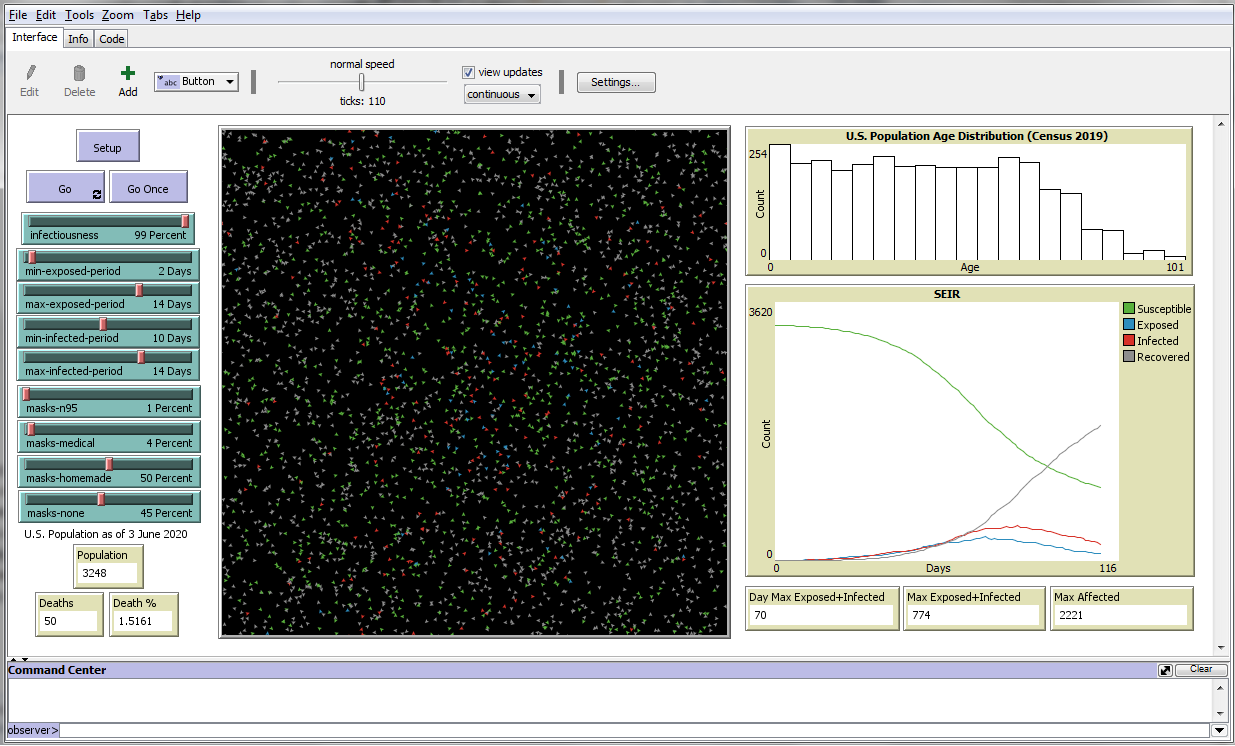I presented a paper titled, "Non-Pharmaceutical Herd Immunity using Homemade Masks" at the 2020 International Conference on Social Computing, Behavioral-Cultural Modeling, & Prediction and Behavior Representation in Modeling and Simulation (SBP-BRiMS) on 20 October 2020. Using research conducted by the scientific community prior to the COVID-19 pandemic (see previous blogs: Efficiency of Other Materials for Homemade Masks and The Efficiency of Homemade Masks) I created a model exploring the ability of mixed efficiency masks to deter the spread of the SARS-CoV-2 virus.
Abstract
The Coronavirus disease 2019 global pandemic in the United States is without a vaccine or cure to prevent its spread. Social distancing and stay at home orders have created financial turmoil while mandatory mask requirements have created other controversies. This paper presents a simple agent-based SEIR model developed to explore the use of homemade masks of various quality in a representative United States population. The goal of the model is to determine if a non-pharmaceutical herd immunity can be achieved using homemade masks. Doing so without vaccines can lower even the small risk posed by an eventual vaccination. The model demonstrates that at high levels of adoption even a mix of questionable quality homemade masks can “flatten the curve” for the pandemic and could do so without the immediate, sever economic cost of staying at home. The model suggests it is possible for a herd immunity effect to cause an early end to the pandemic resulting in fewer affected individuals.

The model and Overview, Design concepts, and Details (ODD) can both be obtained by selecting the Download Version button on the CoMSES OpenABM site at https://tinyurl.com/y2dvu8df.
Cite (paper): Brearcliffe, D. (2020, October). Non-Pharmaceutical herd immunity using homemade masks. In International Conference on Social Computing, Behavioral-Cultural Modeling & Prediction and Behavior Representation in Modeling and Simulation.
Blog comments
WYSIWYG for Blogs
Usually it is WYSIWYG. In this case the blog is using Drupal which has a WYSIWYG editor that can be mixed with HTML.

Whats up this is kinda of off topic but I was wondering if blogs use WYSIWYG editors or if you have to manually code with HTML. I'm starting a blog soon but have no coding skills so I wanted to get advice from someone with experience. Any help would be enormously appreciated!